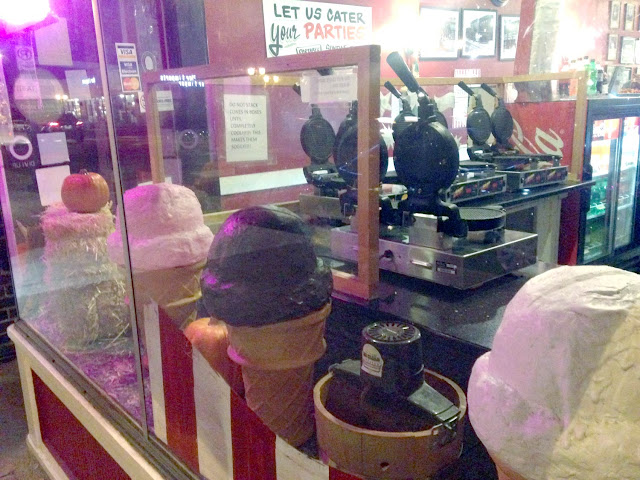[See also, Saint Paul in 1989 Revisited.]
Straight from the
University of Minnesota's Urban Studies office, here's a poster put together by the late City Council member Brian Coyle.
Like the Saint Paul small business example, the poster fascinates. For one thing, there's all the old logos! So many old 70s and 80s graphic design greatest hits appear here. The other thing, of course, is how certain narratives about economic subsidy, government priorities, and economic development strategies never disappear. For his day, Coyle was clearly a more radical voice in Minneapolis City Hall, a former member of SDS and someone who worked to oppose the urban growth coalition that was influencing many of the city decisions during the boom-times of the 1980s. (By contrast, during this time R.T. Rybak was a Star Tribune reporter, then a PR guy for the Downtown Council.)
Check out the "Oligopoly" game in all its glory, and then compare with the headlines and debates in Minneapolis today.
[Clockwise from the top left.]
The Metrodome was built in 1982 and was torn down two years ago in favor of the Vikings stadium. All things considered, the Metrodome was one of the most efficient and taxpayer-friendly stadium projects in the American history. The current occupant of that space, on the other hand... I am confident that that "deal" will go down as one of the worst ever agreed to by American state and local governments.
I don't know what "Cockroach Corners" refers to, but I'd like to find out someday. City Venture refers to
a successful fight against a proposed industrial/commercial park that would have been tied to the Metrodome construction.
Control Data, of course, no longer exists. And to this day, Elliot Park is one the city's remaining affordable neighborhoods in a central location.
Coyle was really into tenant organizing, an issue that, in today's tight market, is probably far more important than it was in the 1980s.
The building on 18th and Elliot, right next to the I-94 freeway, seems to still be there.
I am not sure what the Cedar-Riverside issue might have been, but many of those buildings
were recently remodeled and will serve at least one more generation of Minneapolis' lower-income citizens.
I don't know what the "Stevens Square" tile refers to, or who Jim Larson might be.
Maryland House?
Certainly, however, there is still displacement occurring in this area. See
this nearby example.
Update: See the comment from Ethan, a reader who used to live in Stevens Square:
A lot of the apartment buildings in Stevens Square were remodeled in the early '80s through a partnership by Jim Larson and General Mills, which was testing if it could make money through urban renewal. (Turns out they couldn't, and they lost a ton of money.) That venture eventually became Stevens Community Associates, one of the biggest landlords in the neighborhood.
Boisclair is an urban development corporation that put together
Riverplace, the quick-failing downtown mall that occupies the oldest street in Minneapolis, a key part of old St. Anthony Main Street. All things considered, the project wasn't a total bust, and managed to help stabilize a bunch of historic buildings. The movie theater is even somehow still in business!
Calhoun Square is an urban mall that dates to 1983. It still exists though whether or not it is "thriving" seems a more difficult question to answer.
City Center was a 1983 downtown mall and office complex that has likely had more of a negative than a positive economic effect on downtown Minneapolis, though that is
certainly debatable. Today the buidling is being remodeled again -- a process that has taken years -- but it still has one of the least inviting street facades in all of Minneapolis, and that is saying something!
Donaldson's was a department store that
burned down in Thanksgiving 1982.
The Hennepin Hyatt is still in business and still one of the key hotels and convention complexes in downtown Minneapolis. The next-door "
Loring Greenway" project dates to this era too. Together these projects had
a huge impact on Hennepin Avenue.
Here's a rough diagram of the city that includes many of the corporate logos from the mid-80s. For me, one useful lesson of a document like this is that mergers and consolidation are one inevitable trend of the modern corporate economic structure. These kinds of Wall Street induced deals mean that business subsidization takes place on a "winner-take-all" landscape. As companies merge, they will inevitably concentrate in fewer and fewer cities. In the end, that will leave mid-size metros like the Twin Cities more likely to lose out.

What are the policy
lessons we might draw from that? I would love to do additional research to figure out exactly how many of these projects received tax subsidy, and how large those subsidies were. I suspect that, given that they made Coyle's black list here, all of them were taxpayer funded.
Read
more about Brian Coyle here. Today a rec center behind the Cedar-Riverside towers bears his name. It offers a great view of the Vikings stadium.

















































